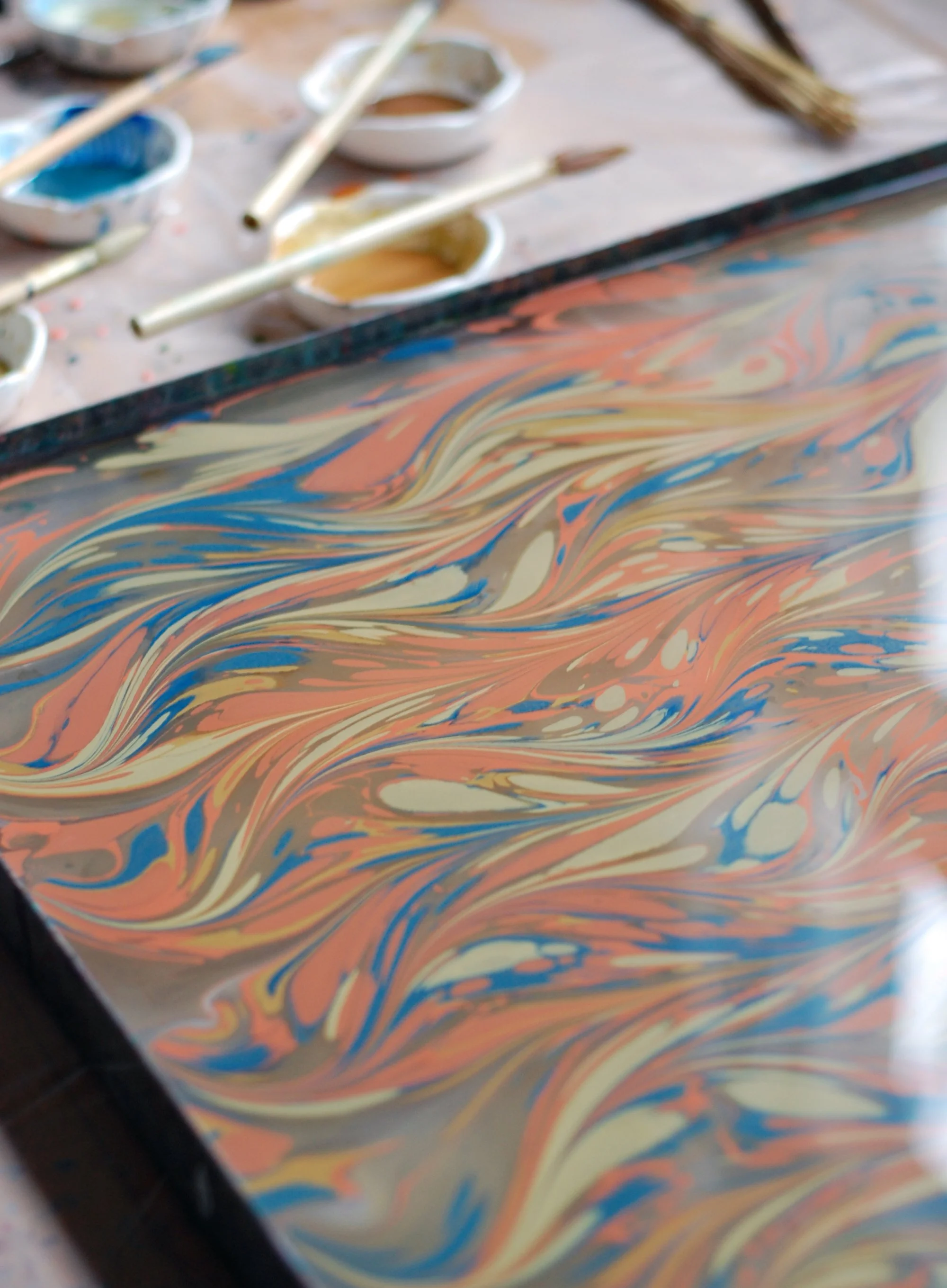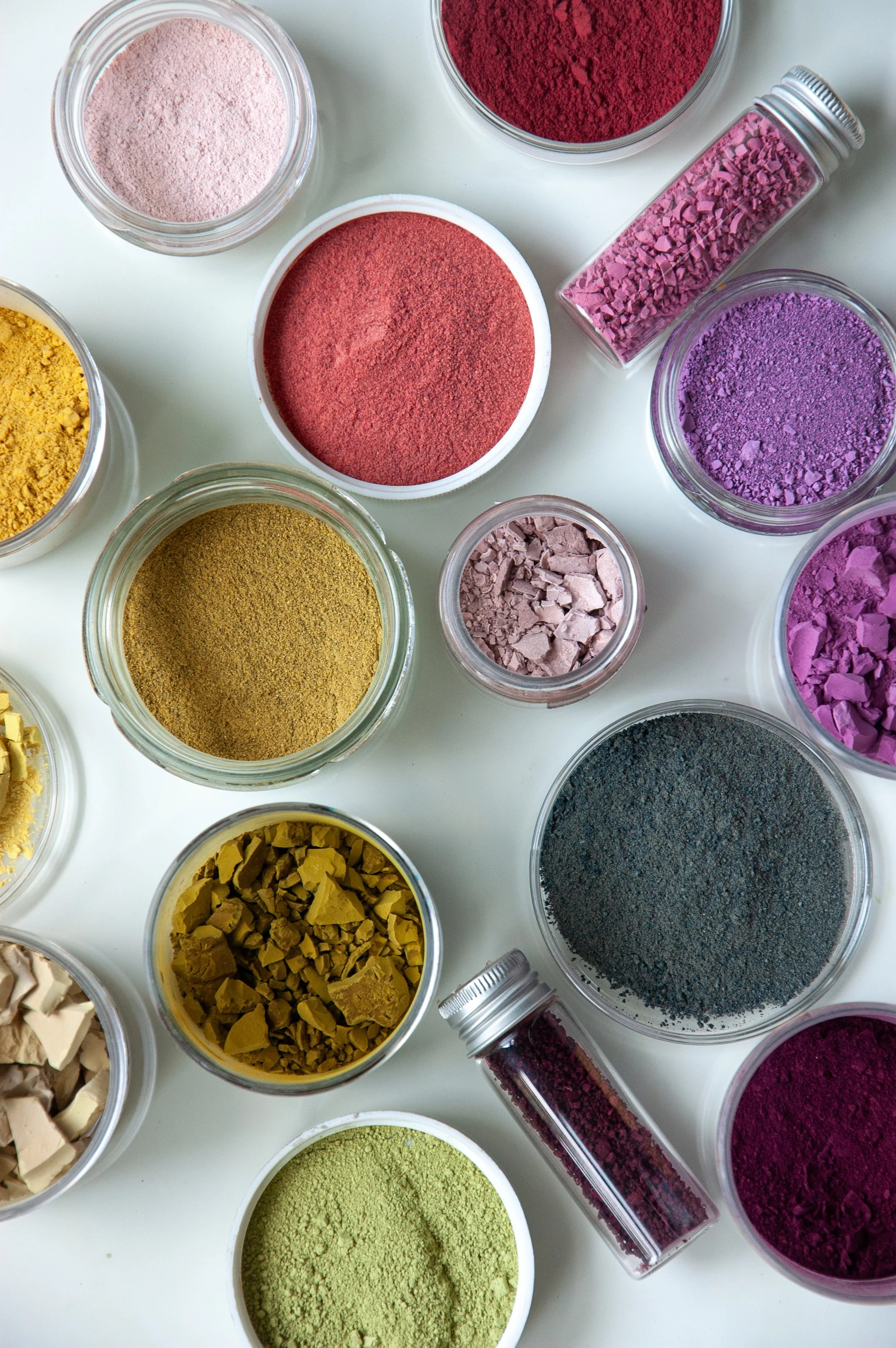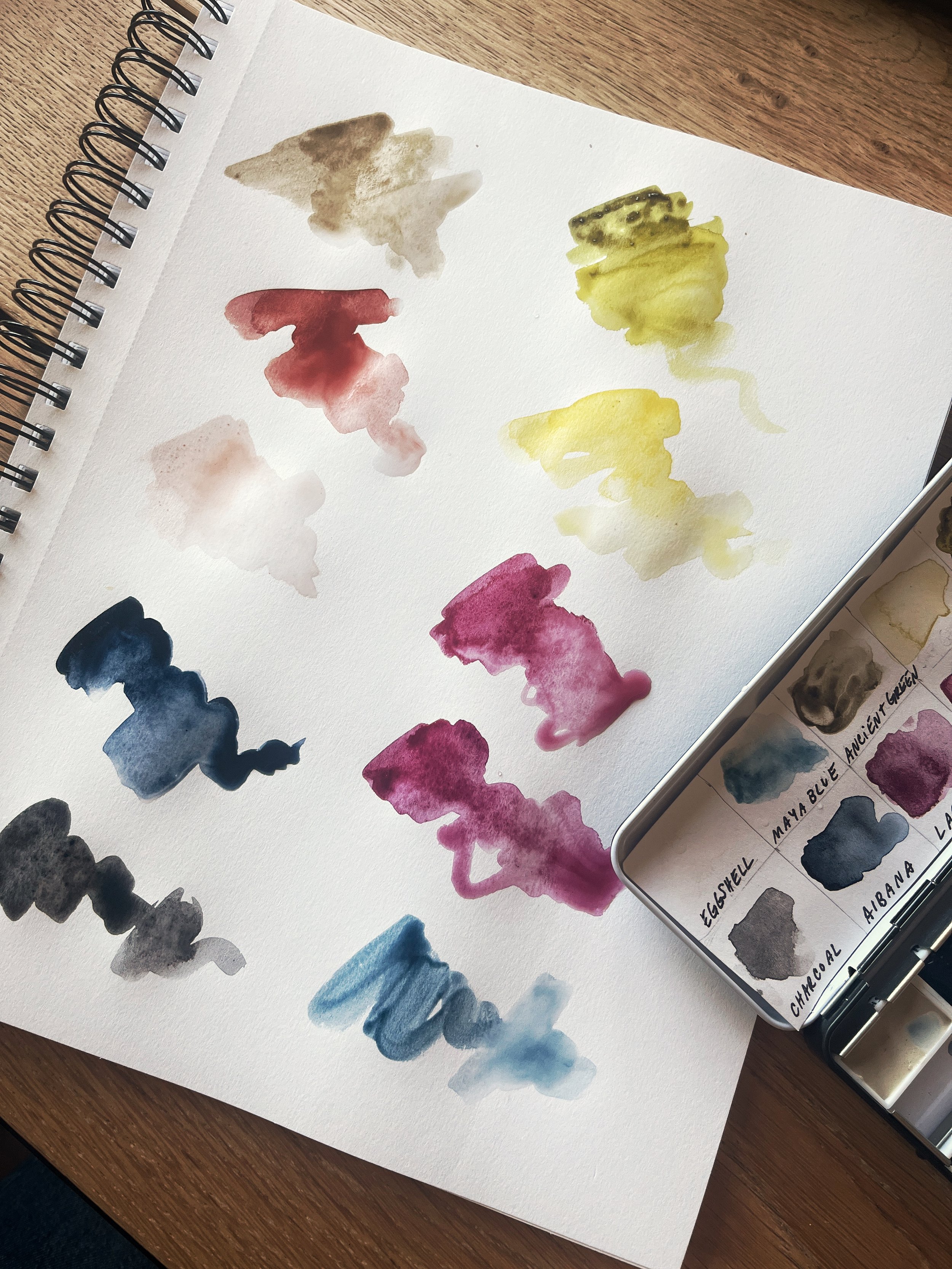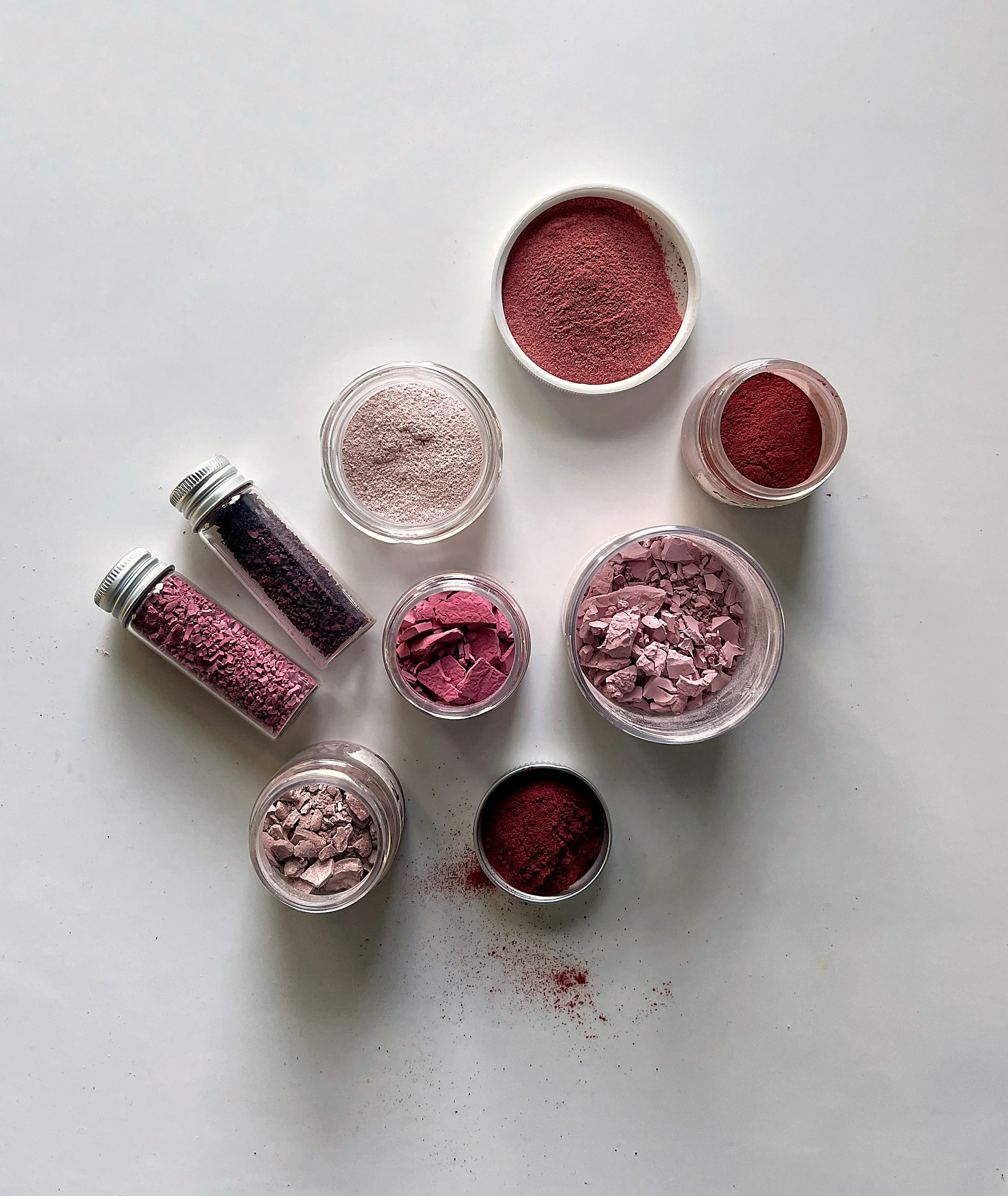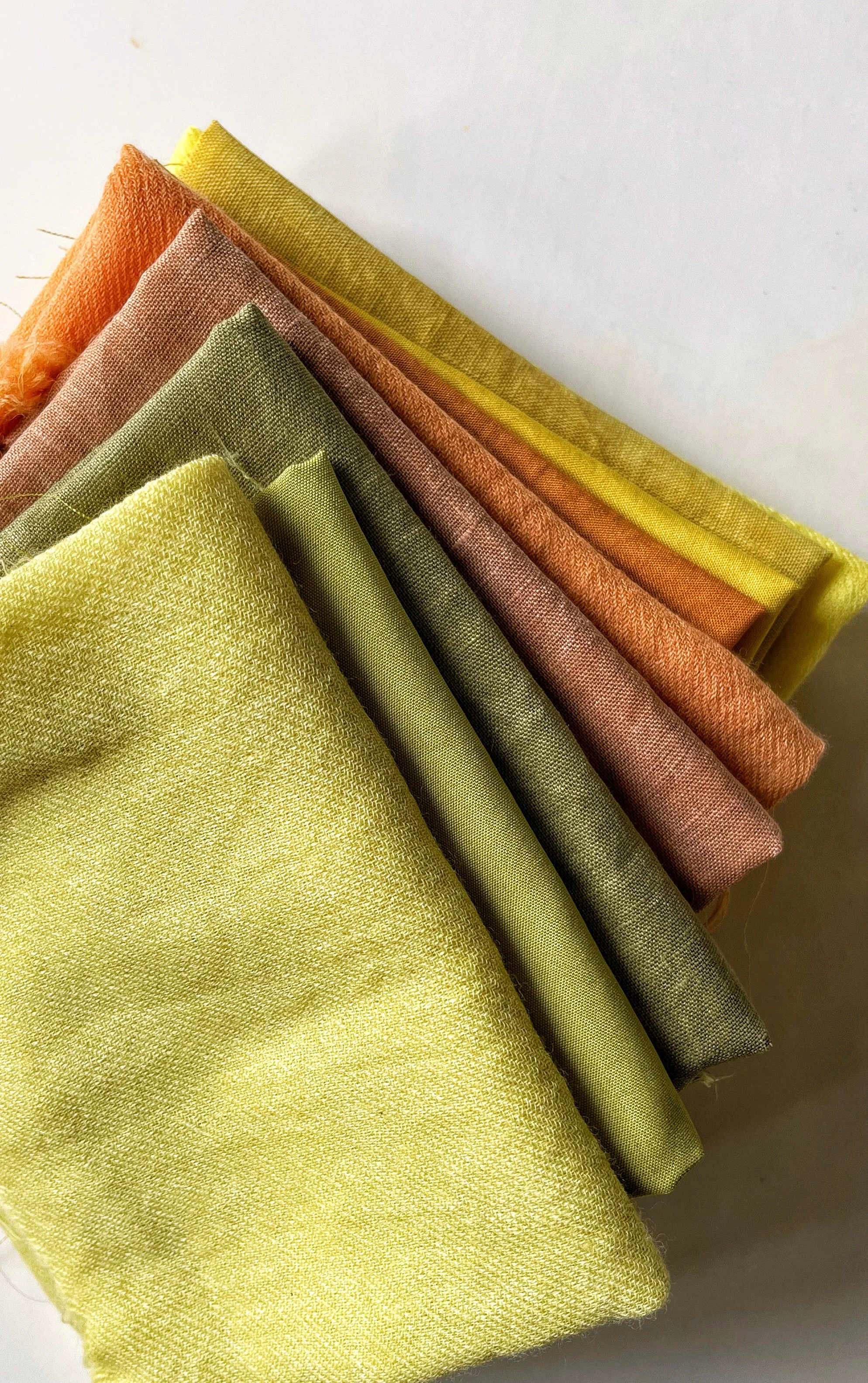Upcoming Learning Opportunities
Festive Marbling
TOAST
Online Workshop
December 15, 6:00 - 7:30pm BST
Each season TOAST brings together like-minded, creative individuals through a series of events, talks and workshops. Join us online for a festive marbling workshop, led by book and textile artist Natalie Stopka. Using a centuries-old printmaking technique, Natalie will guide you through crafting festive paper stationery and gift tags with colourful paints.
Lake Pigment Making
Deep Dive
A yearlong series hosted by Plants & Colour
starting in January, 2026
A new year-long online programme exploring the concepts and chemistry of lake pigments following a historical trajectory from ancient Egyptian recipes, to medieval approaches, and modern-day techniques. Taught by Natalie Stopka, Lucy Mayes, and Julie Beeler in monthly live online sessions delving into different perspectives and processes.
Historical & contemporary practices With Lucy Mayes
Flowers of the Field With Natalie Stopka
Sustainability With Lucy Mayes
Making Laking Reagents With Lucy Mayes
Buckthorn Lakes With Natalie Stopka
Mushroom Lakes with Modifiers With Julie Beeler
Indigo and other non-laked colourants With Natalie Stopka with Lucy Mayes contributing
Madder Root Lakes With Natalie Stopka
Fungi Alkali Extractions With Julie Beeler
Creating a Palette of Colours With Lucy Mayes
Study Groups and one-on-one Mentorship are also available for this series!
Printing & Painting on Textiles
With Natural Colour
A yearlong series hosted by Plants & Colour
starting in January, 2026
Learn a wealth of different approaches to printmaking and painting on textiles using natural colour in this new yearlong, online series. Taught by Natalie Stopka, Greta Facchinato, Caroline Ross, Julie Beeler, Winona Quigley, and Jacqui Symons, sharing different techniques for making patterns and prints on fabric that are light-fast and wash-fast. Sessions include:
Making a Start: orientation, studio setup & intention setting
Soya for Dyeing and Mordant Painting
Soya Binder or Topcoat for use with pigments
Making a Printing Ink Paste from natural dyes
Making a Printing Ink Paste from pigment/extract
Screen Printing Pattern with natural ink
Applying Ochre Glue Paint & Tannin Inks for fabric and leather surfaces
Fabric Printing with Mushroom Paints
Mordant Printing: Create color & pattern in a single dye pot
Mordant Painting with Mushroom Dyes
Natural Black Mordant for printing, painting & eco printing
Resist Pastes for immersion dyeing & direct print paste for semi-resist effects
Reflections & Sharing
Learn more about the instructors, format, optional Study Groups and one-on-one Mentoring through the link below!
From Plant to Pigment: Introduction to Lake Pigments
Textile Arts Center
Brooklyn, New York
January 10, 11:00 - 5:00
For those of us seeking sustainability and ecological connection in our creative practices, the chemically pure colors of today’s art suppliers are very far removed from nature. Join Natalie Stopka, author of From Plant to Pigment, for an introduction to lake pigments. This process of transmuting fragile botanical dyes to durable pigments extends the artistic applications of natural dye colors into expanded media including paint, ink, and pastel. Inspired by the history and craft of color-making, Natalie will share her master recipe for creating handmade, homegrown, and local pigments. Participants will leave with three different pigment colors, an overview of paint-making, and the knowledge to continue exploring lake pigments in their own studios.
Natalie’s studio recipe book From Plant to Pigment: How to make your own vibrant inks, pastels and paints is now available! Participants may wish to purchase a copy at our workshop, or bring a copy to be signed by the author.
From Plant to Pigment: Cook the Book
An online workshop series
Hosted by Natalie
Alternate Saturdays starting February 14, 1:00 - 3:00pm EST
Inspired by the history and craft of color-making, From Plant to Pigment is a recipe book for creating handmade, homegrown, and local pigments. Join author Natalie Stopka to learn the process of transmuting fragile botanical dyes into durable lake pigments, extending the artistic applications of dye colors into expanded media.
In this eight-part live online series, participants will follow along with Natalie to cook their way through the book, concocting 6+ lake pigments utilizing a variety of extraction methods, along with ink, paint, pastel, and charcoal. Working through the recipes with Natalie’s guidance will allow participants to quickly learn the operative chemistry of botanical pigments, and stock their studios with colors ready to create art. Don’t let From Plant to Pigment suffer the fate of so many art manuals and cookbooks: sitting on a shelf to gather dust, their contents unplumbed and lessons unlearned!
This mini-series is designed to provide a solid technical foundation, along with rich context for artistic inspiration and conceptual connectivity. It is open to all levels of experience, but aimed at beginner and intermediate pigment-makers eager to get their hands dirty and their studios supplied with botanical art materials. Registrants are invited to work along with Natalie during our class sessions, sharing outcomes and questions as the course unfolds. Registration is intentionally capped to foster a comfortable and convivial learning environment.
February 14: Introduction to the Studio Larder, Necessary Equipment, and Terminology
February 28: Natalie’s Master Lake Pigment Recipe
March 14: Purple Petals
March 28: Tinctures & Modifiers
April 11: Alkaline Extraction
April 25: Fermentation Extraction
May 9: Inkmaking & Paintmaking
May 23: Charcoal & Pastel
A Handmade Palette: Natural, Historical & Garden-grown Watercolors
John C. Campbell Folk School
Brasstown, North Carolina
July 19 - 25, 2026
Where does color come from? Delve into the history, chemistry, and hands-on practice of making pigments and paint. Concoct your own palette of handmade watercolors inspired by artists’ recipes from the 14th to the 17th-century, including earth pigments, lake pigments from the dye garden, and charcoal combined with natural medium. Return home with a paint box of twelve watercolors, a sketchbook of recipes and swatches, and the knowledge to continue expanding your palette.
Check out the JCCFS Scholarship Opportunities before registering! Applications due February 9.
Discounts available to residents of local NC counties, veterans, teachers, and young adults.
Botanical Alchemy: Exploring Extraction Methods for Natural Dyes and Lake Pigments
Sanborn Mills Farm
Loudon, New Hampshire
July 29 - August 2, 2026
Dye plants are remarkable factories of color, biosynthesizing a rainbow of hues for natural dyers, inkmakers, and lake pigment lovers. How do we make the most of these natural resources, eliciting the broadest range and maximum yield of color? Join Natalie Stopka for a five-day exploration of dye extraction methods utilizing plants from the dye garden and beyond. Inspired by recipes from historical dye works and pigment manufacture, we’ll undertake a case study of four plants and four extraction methods: digestion, decoction, fermentation, and tincture. Learn which methods are suited to which plants, and how extraction methods influence dyeing and laking procedures. Participants will leave with a laboratory notebook (provided) documenting our 16+ extractions utilized as dye and pigment, and a personal project: ink, paint, or dyed fibers to fold into their own studio practice. They will also take with them the knowledge to extrapolate our analysis and findings to other plants in future. Some prior experience with dyes or pigments preferred.
Skills and Techniques
Chemistry for artists: dye colorant categorization and pH explication
Exploration and analysis of plant pigments using DIY chromatography
Case study extracting 4 plants by decoction, digestion, fermentation, and tincture
Swatches of 16+ extractions utilized as dye and pigment, organized in our laboratory notebooks
Riveting stories from the history and artistry of color manufacture, from the medieval scriptorium, dye works, and alchemist’s laboratory, up to the present day
Learn about Sanborn Mills Farm Scholarship Opportunities.
Contact Natalie with queries about remote private instruction on intermediate and advanced topics.
